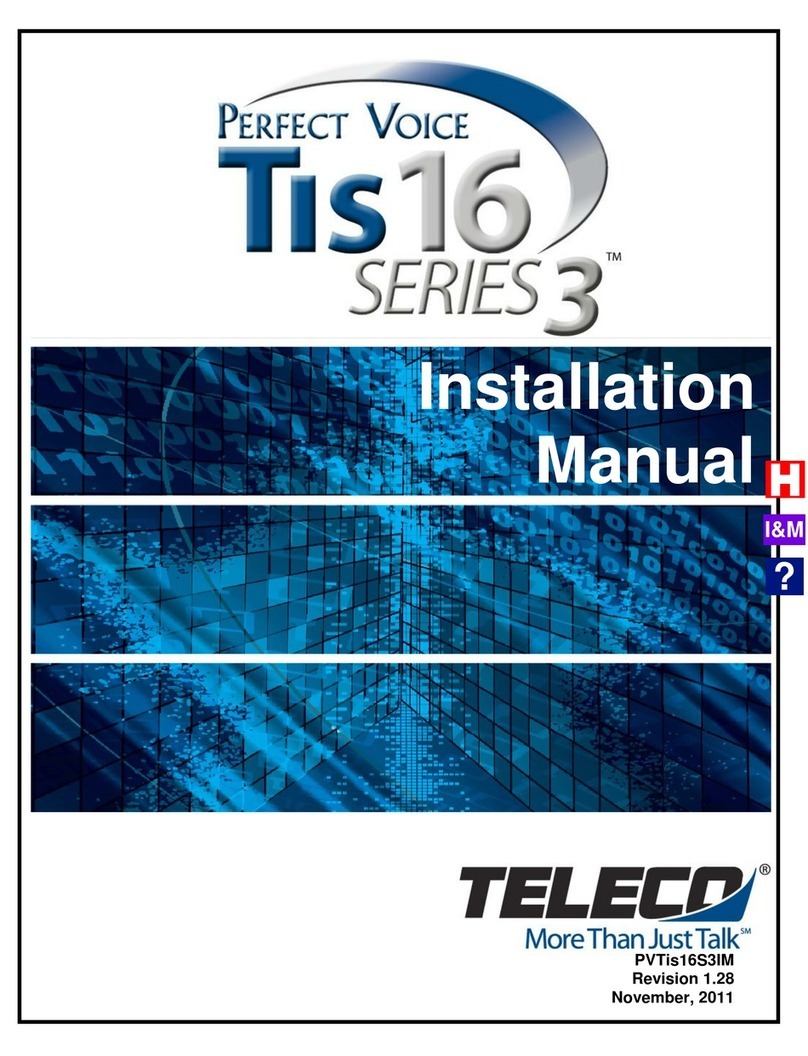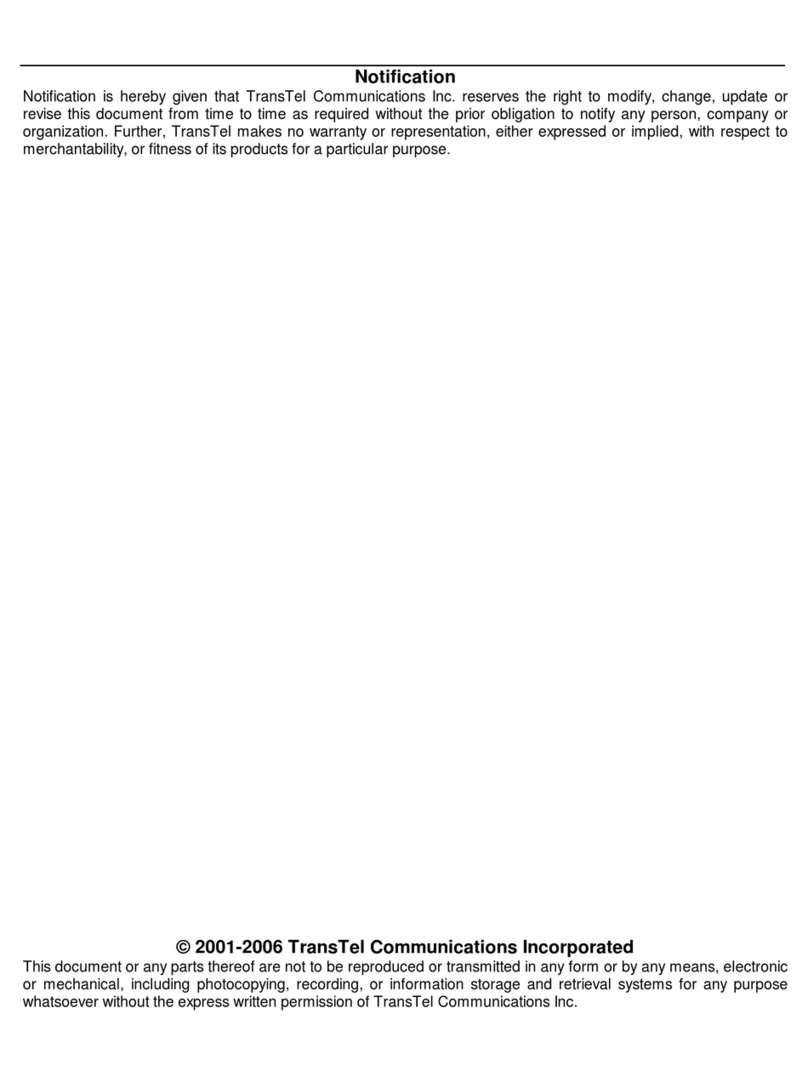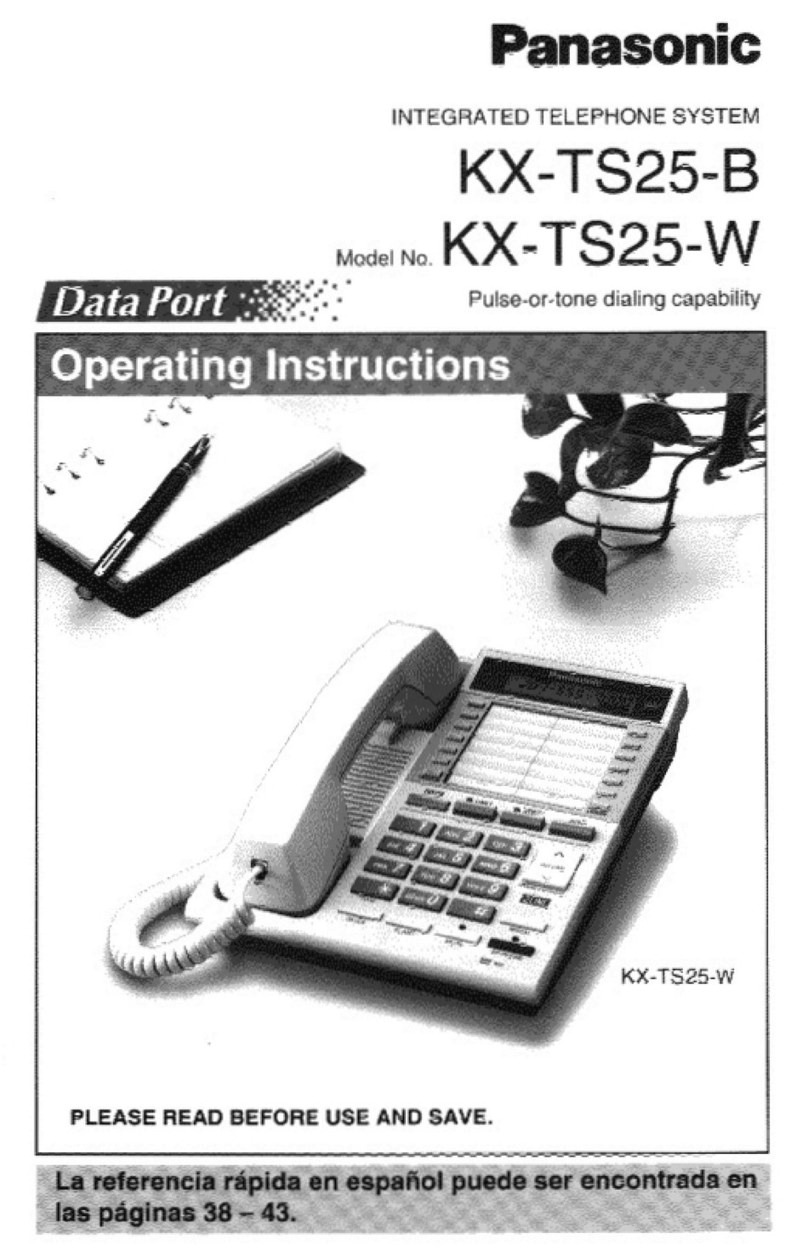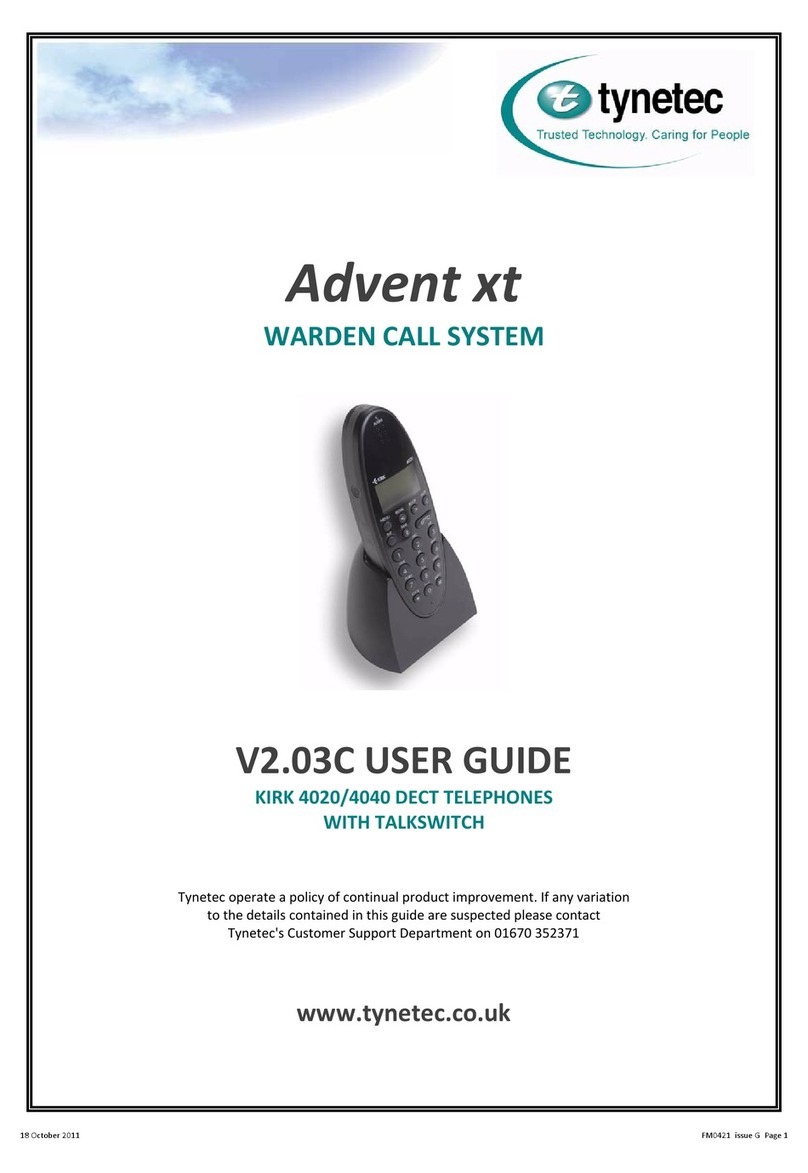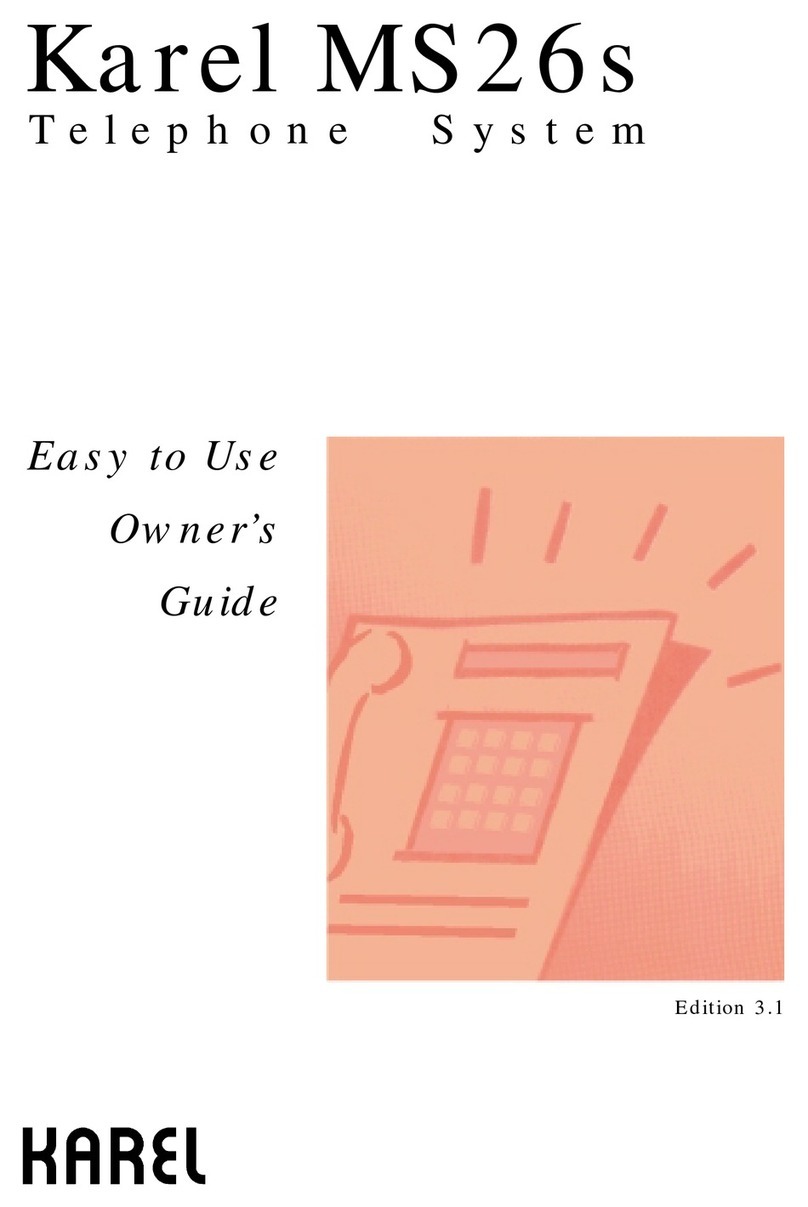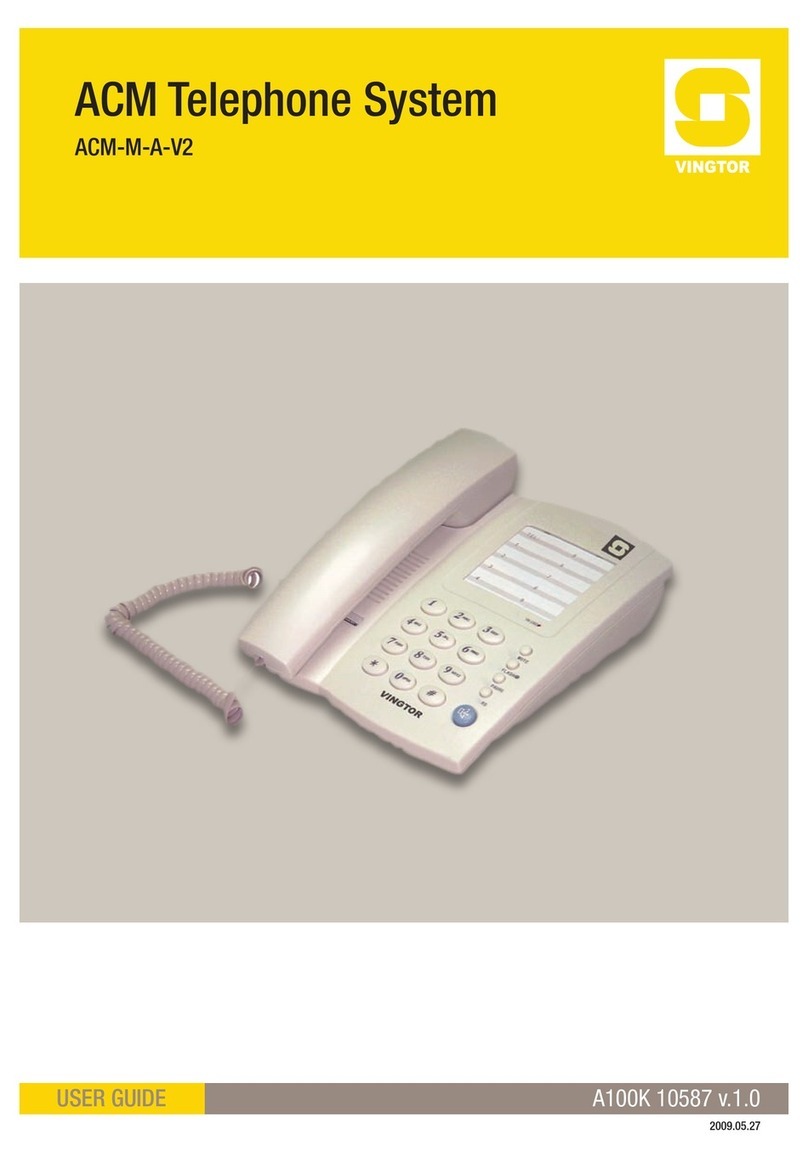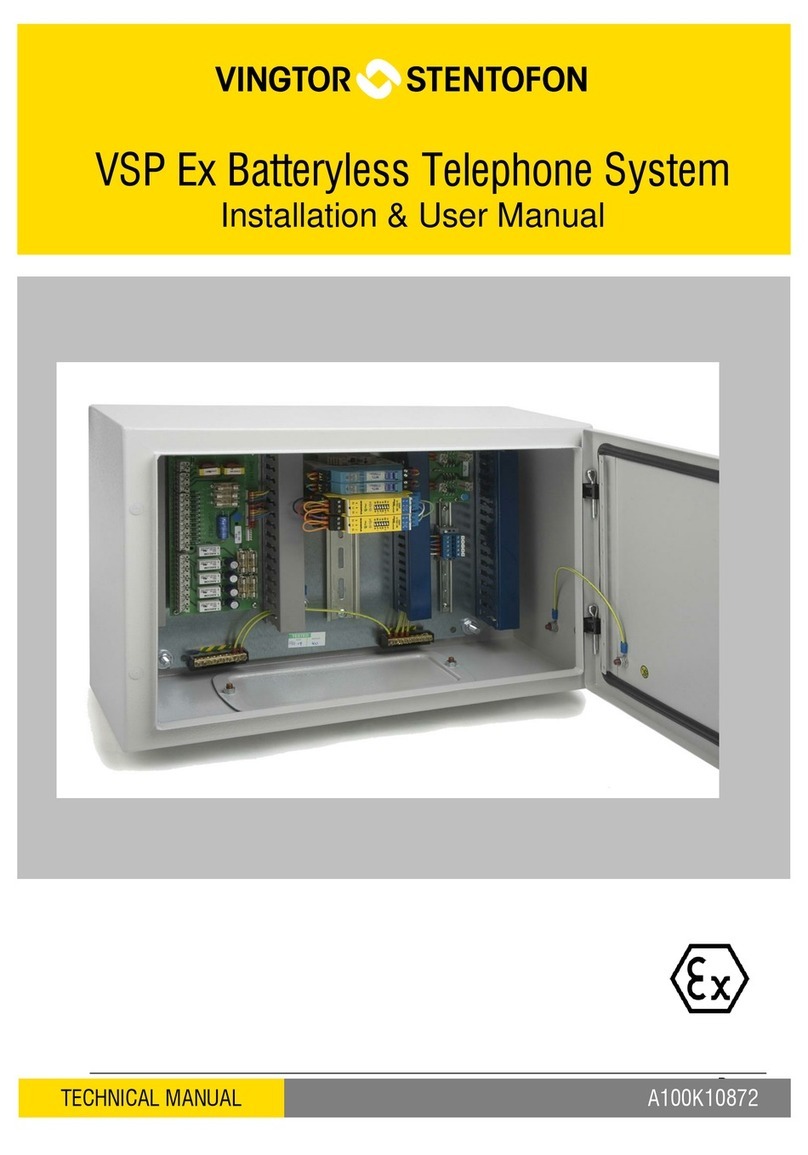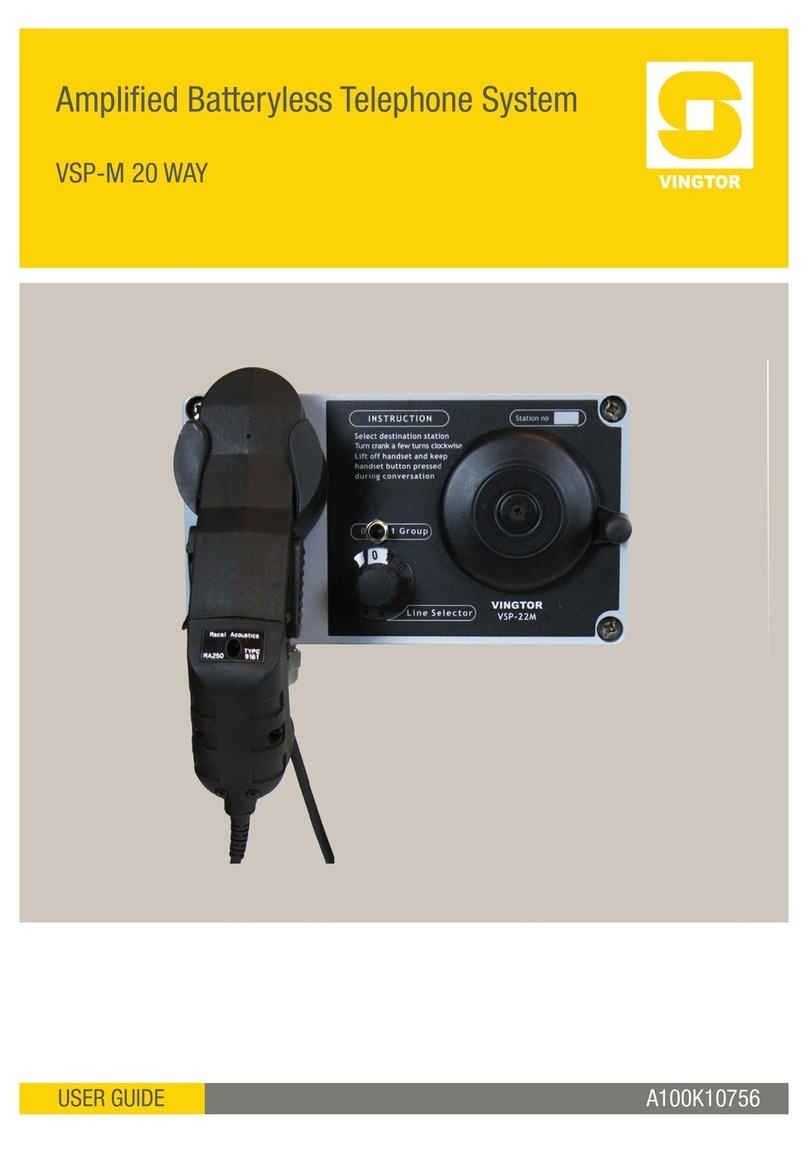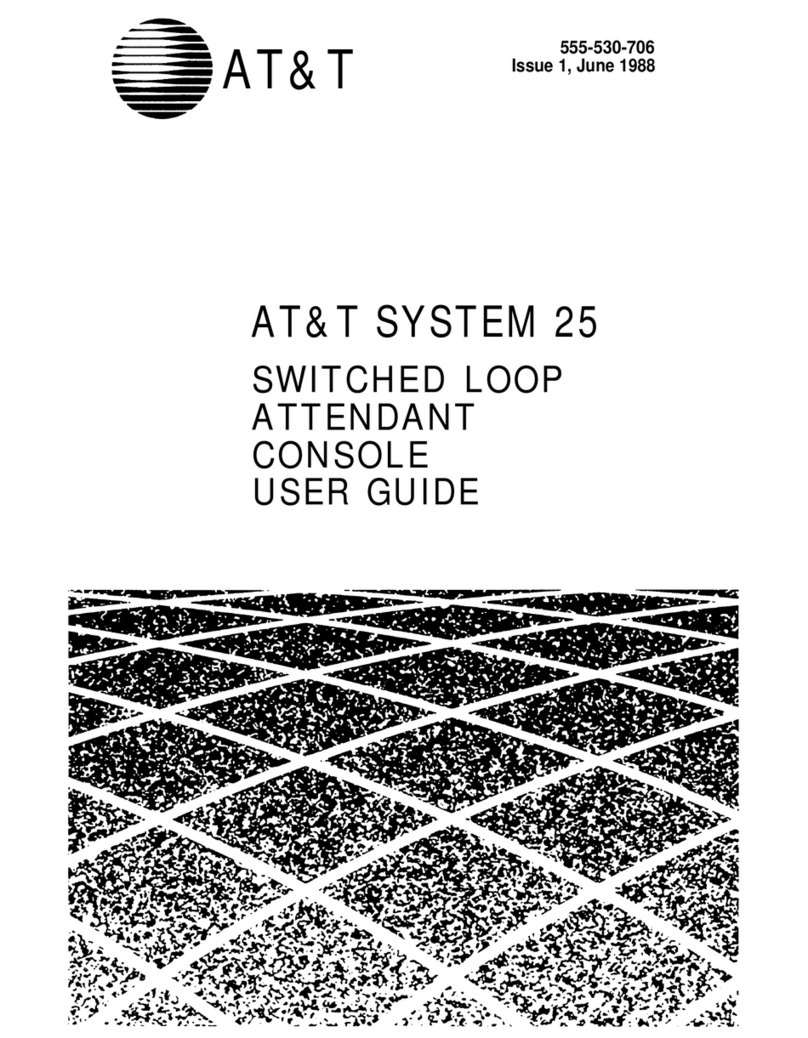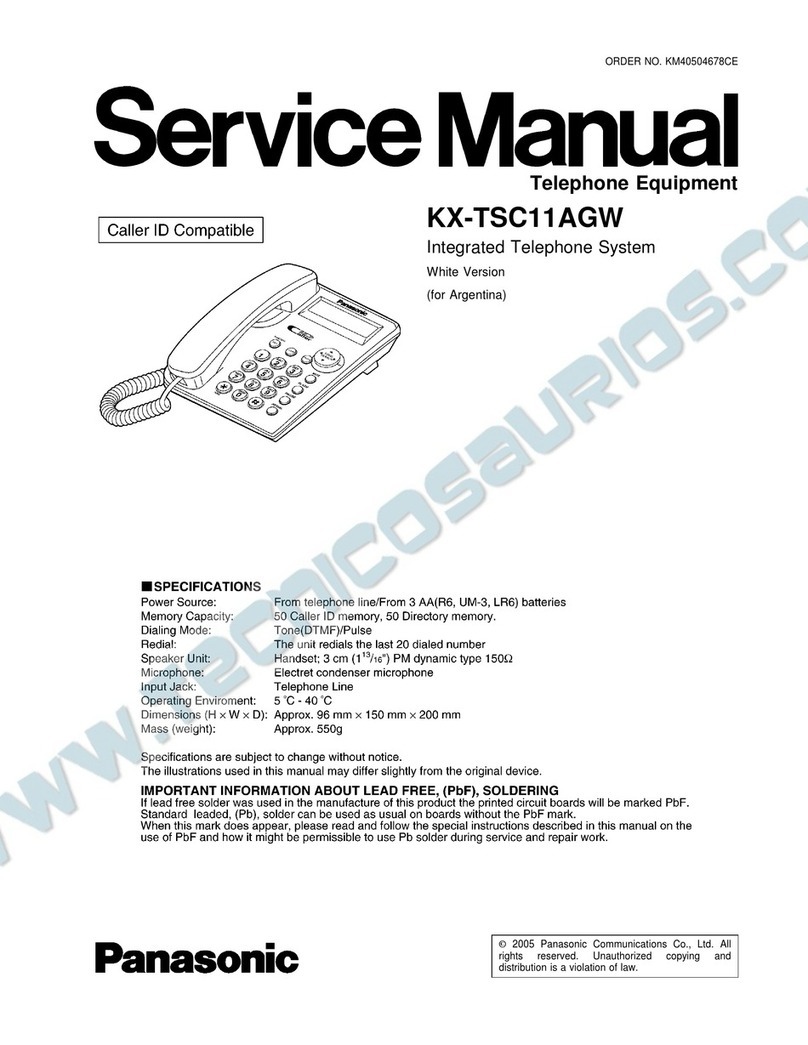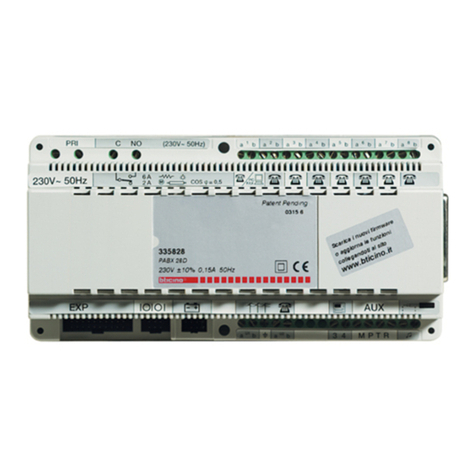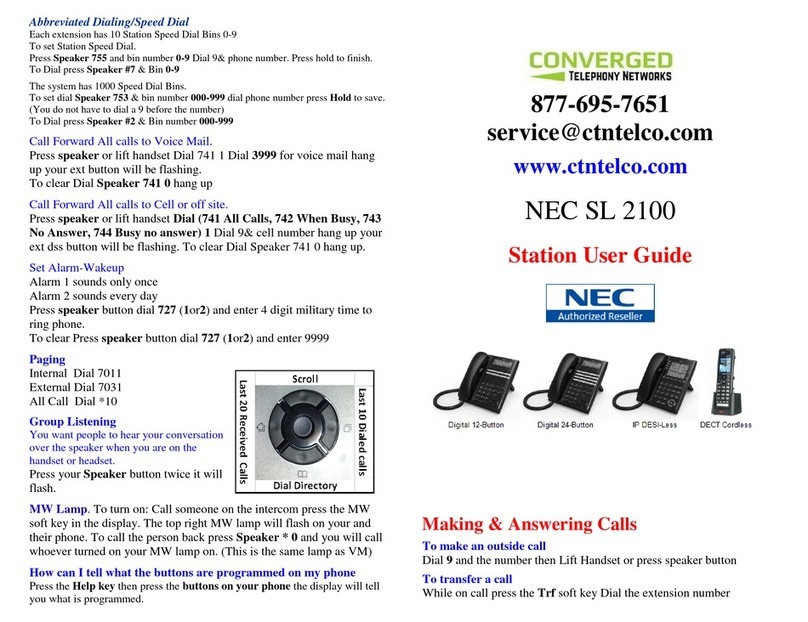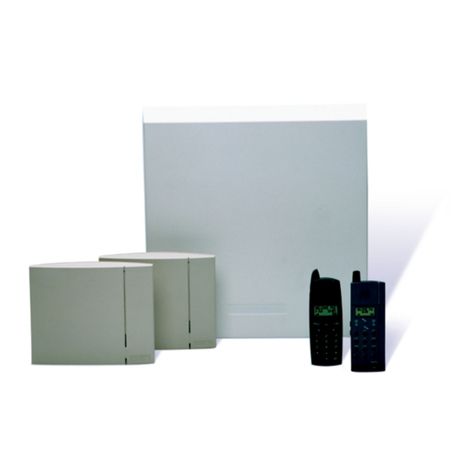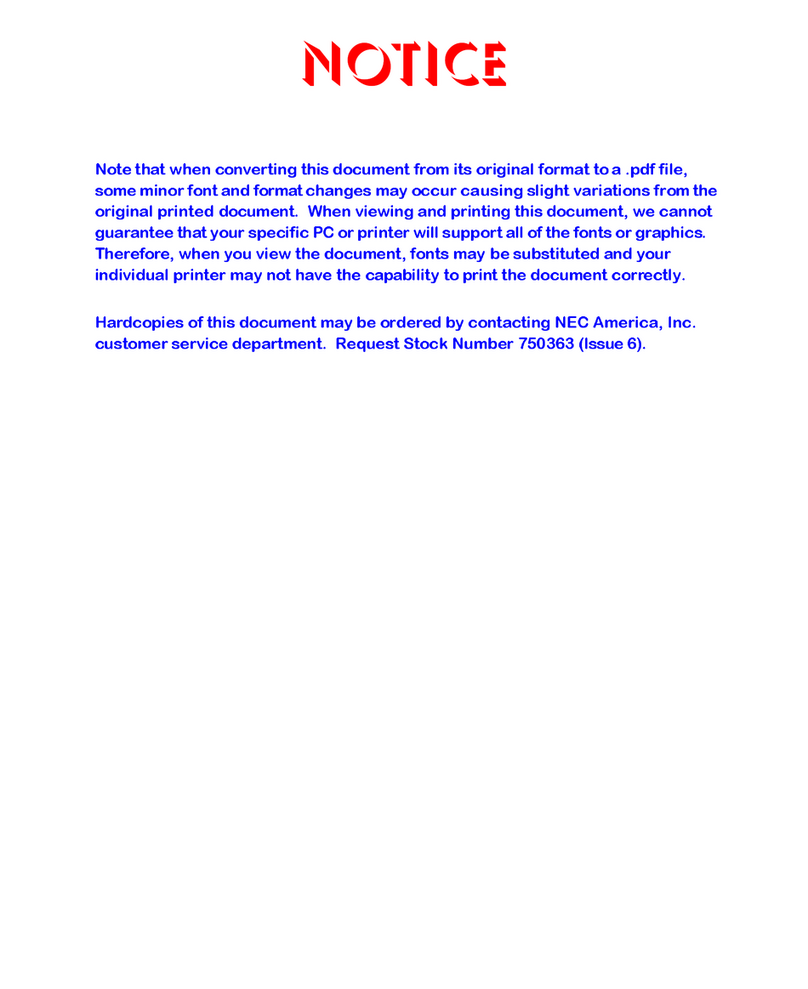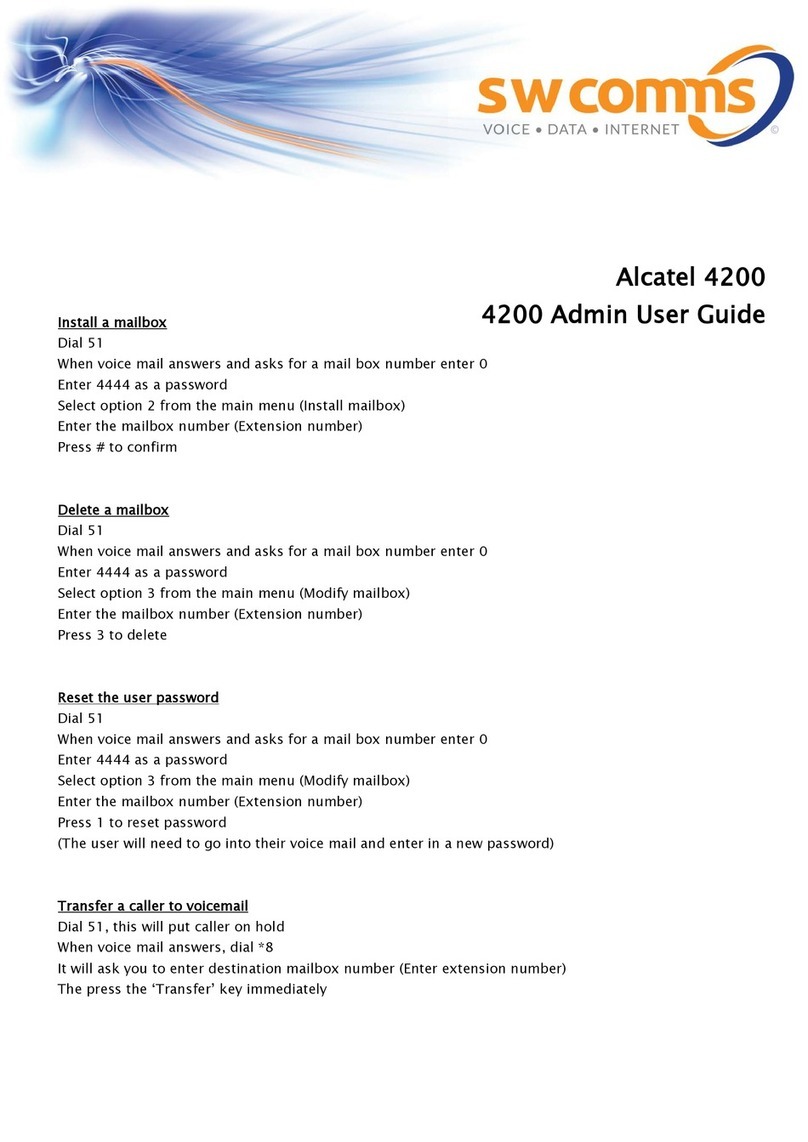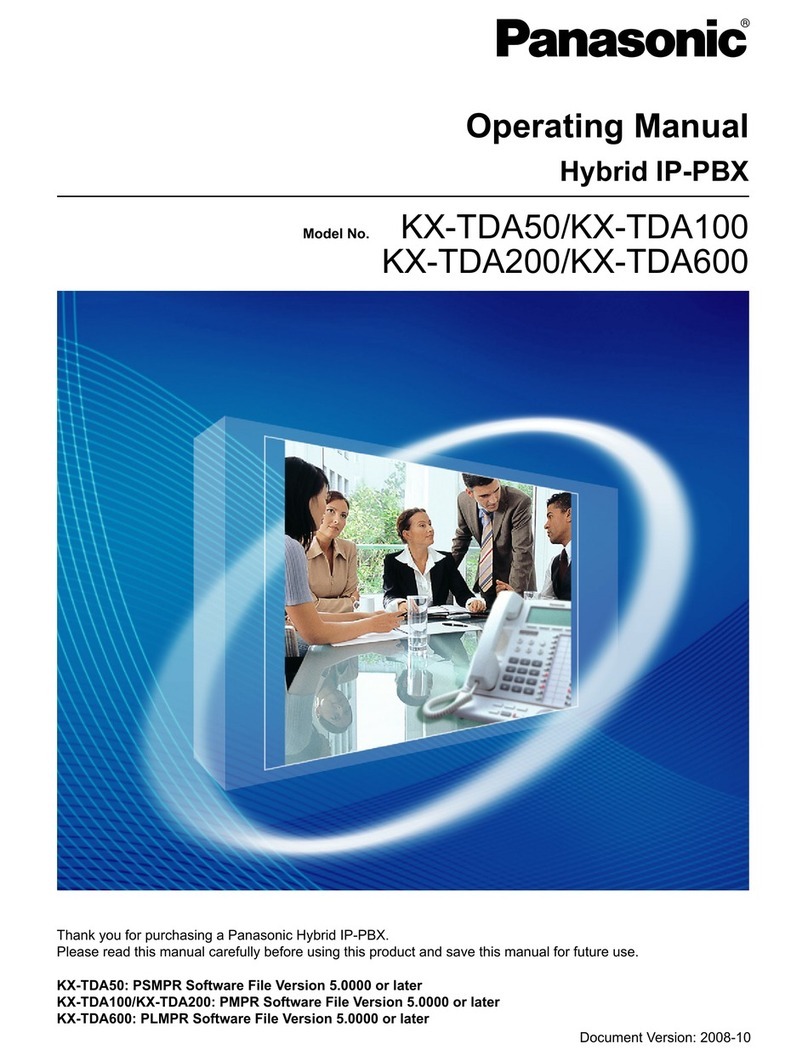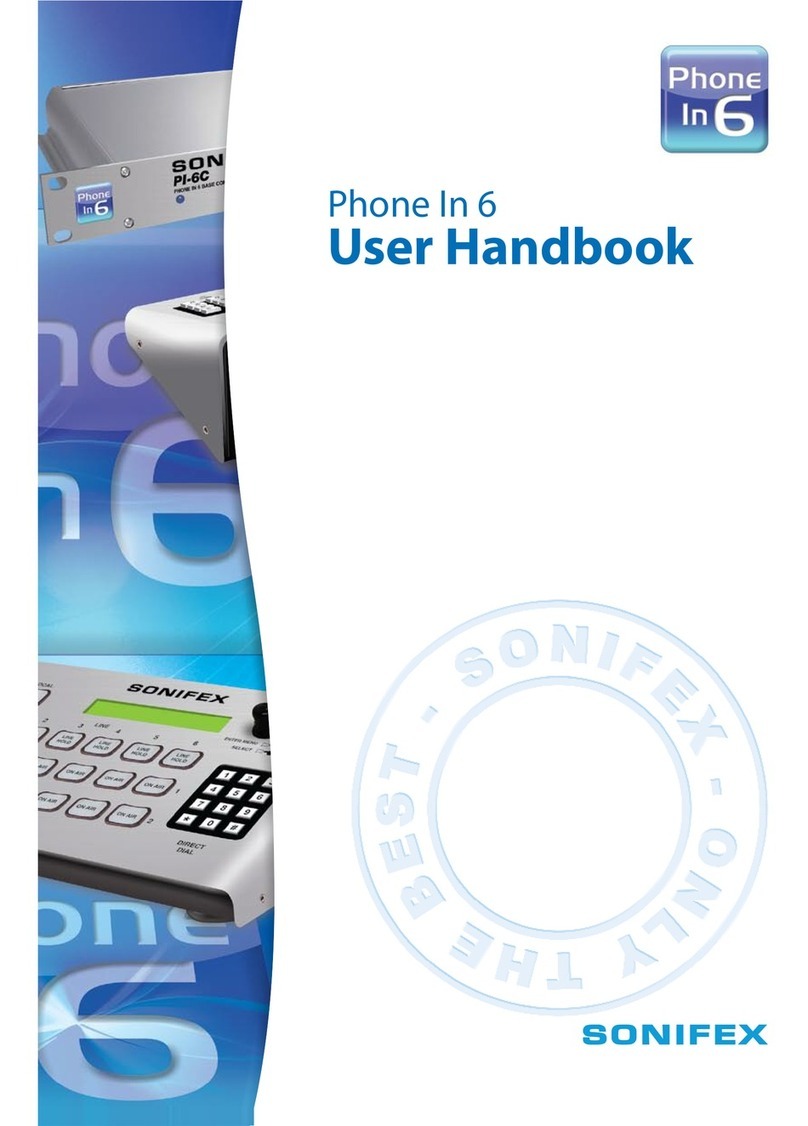Page 2 ACM Telephone System – AMC-M-A A100K 10430 v.1.0
Table of Contents
1INTRODUCTION................................................................................ 4
1.1 About this Document .................................................................. 4
1.2 Revision Information................................................................... 4
1.3 Other ACM Manuals................................................................... 4
1.4 DNV Type Approval Regulations................................................ 4
1.5 ACM Test Reports...................................................................... 4
2ACM SYSTEM OVERVEIW............................................................... 5
2.1 VINGTOR ACM Solutions .......................................................... 5
2.2 ACM Telephone System ............................................................ 6
2.3 ACM System Architecture .......................................................... 7
2.3.1 System rack ........................................................................ 7
2.3.2 Field equipment .................................................................. 8
3HW INSTALLATION GUIDE ............................................................. 9
3.1 System Rack Mounting .............................................................. 9
3.2 Insert Feature Boards................................................................. 9
3.3 Connection terminals.................................................................. 9
3.4 Power Supply ........................................................................... 10
3.4.1 Power failure..................................................................... 10
3.5 Line Connection Module (LCM)................................................ 10
3.5.1 Subscriber lines ................................................................ 11
3.6 RCO.......................................................................................... 12
3.7 PA Connection.......................................................................... 12
3.7.1 PA amplifier with chime, without monitor.......................... 12
3.7.2 Intercom station as PA monitor ........................................ 13
3.8 External Communication .......................................................... 13
4PROGRAMMING AND CABLE REFERENCE LIST ...................... 14
4.1 Station and User Information.................................................... 14
4.1.1 Station info........................................................................ 14
4.1.2 Programming .................................................................... 15
4.1.3 Terminal connections........................................................ 15
4.1.4 Additionals ........................................................................ 15
4.2 Integrated PA Interface ............................................................ 16
4.3 IP Configuration........................................................................ 16
4.4 Trunk Lines............................................................................... 17
5PROGRAMMING OVERVIEW......................................................... 18
5.1 AlphaWeb, Getting Started....................................................... 18
5.1.1 Connect to AlphaWeb....................................................... 19
5.1.2 Save and apply changes .................................................. 19
5.2 AlphaPro, Getting Started ........................................................ 20
5.2.1 PC setup ........................................................................... 20
5.2.2 Insert the HW dongle ........................................................ 20
5.2.3 AlphaPro Menu Structure ................................................. 20
5.2.4 Create New Network and Exchange(s) ............................ 20
5.2.5 Data communication ......................................................... 21
6PROGRAMMING GUIDE................................................................. 22
6.1 Programming Overview............................................................ 22
6.2 Perform Cold Start.................................................................... 22
6.2.1 Cold start procedure ......................................................... 22
6.2.2 Cold start of AMC application only, keep IP setting ......... 22
6.3 Configure IP Address ............................................................... 23
6.4 Enter License Key .................................................................... 24
6.5 Configure User Settings ........................................................... 25
6.5.1 General user settings........................................................ 25
6.5.2 Program different class of service for users ..................... 27
6.6 Configure Interface to PA ......................................................... 27
6.7 Configure External Communication.......................................... 27
